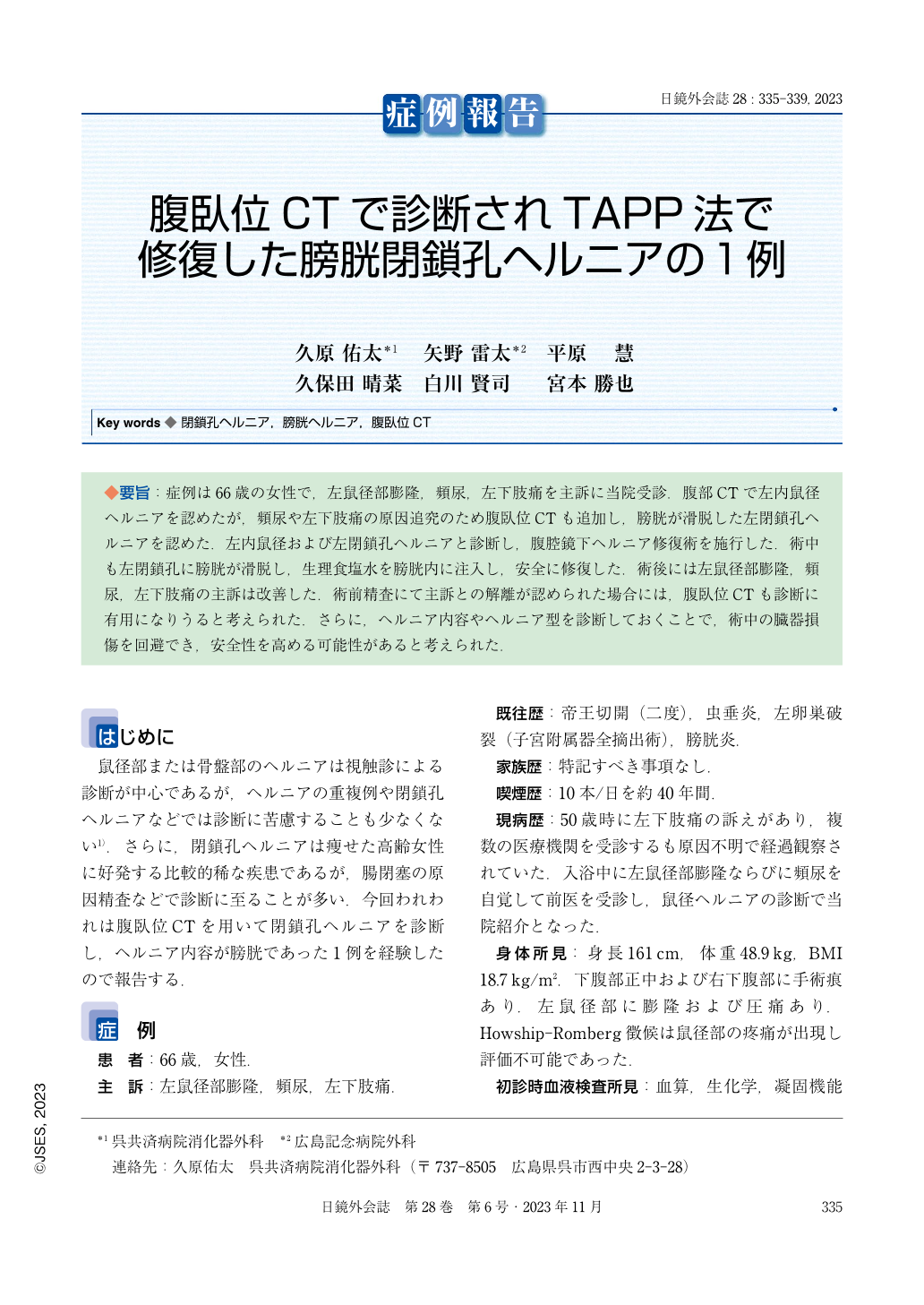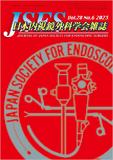Japanese
English
- 有料閲覧
- Abstract 文献概要
- 1ページ目 Look Inside
- 参考文献 Reference
◆要旨:症例は66歳の女性で,左鼠径部膨隆,頻尿,左下肢痛を主訴に当院受診.腹部CTで左内鼠径ヘルニアを認めたが,頻尿や左下肢痛の原因追究のため腹臥位CTも追加し,膀胱が滑脱した左閉鎖孔ヘルニアを認めた.左内鼠径および左閉鎖孔ヘルニアと診断し,腹腔鏡下ヘルニア修復術を施行した.術中も左閉鎖孔に膀胱が滑脱し,生理食塩水を膀胱内に注入し,安全に修復した.術後には左鼠径部膨隆,頻尿,左下肢痛の主訴は改善した.術前精査にて主訴との解離が認められた場合には,腹臥位CTも診断に有用になりうると考えられた.さらに,ヘルニア内容やヘルニア型を診断しておくことで,術中の臓器損傷を回避でき,安全性を高める可能性があると考えられた.
A woman in her sixties was admitted to our hospital with left inguinal swelling, pain in her left upper leg, and pollakiuria. Computed tomography(CT)revealed a left inguinal hernia. A prone position CT was also performed to determine the cause of the patient's left upper leg pain and pollakiuria, revealing a left obturator foramen hernia with a prolapsed bladder. She had a left inguinal hernia and a left obturator bladder hernia. We performed laparoscopic hernia repair. A left obturator hernia with a prolapsed bladder was also discovered during the laparoscopic operation. We safely performed laparoscopic hernia repair after injecting saline into the bladder. The left inguinal swelling, left upper leg pain, and pollakiuria were gone after the surgery. If a deviation from the main complaint was discovered during the preoperative examination, prone position CT may be useful in diagnosing the hernia. Furthermore, determining hernia content and type may help avoid intraoperative organ injury and increase safety.

Copyright © 2023, JAPAN SOCIETY FOR ENDOSCOPIC SURGERY All rights reserved.


